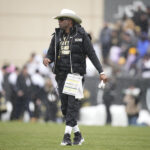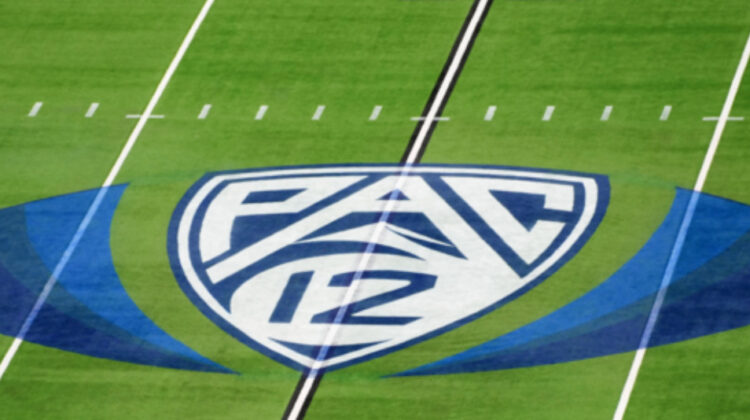The legal fight for control of the Pac-12 takes a critical turn early next week. Will Washington State and Oregon State be deemed the sole members of the conference’s governing board? Will the 10 departing schools retain their votes and defy the two left behind?
The outcome of a preliminary injunction hearing in Whitman County (Wash.) will help define the next move for all 12 schools and potentially determine the fate of tens of millions of dollars in Pac-12 assets.
But a court decision last week in Northern California added clarity to the other side of the ledger. The Pac-12 brand itself might morph into a massive liability.
U.S. District Court Judge Claudia Wilken’s ruling in an antitrust case pushed the NCAA closer to paying billions of dollars in damages.
Specifically, Wilken granted class-action status to a three-level lawsuit aimed at compensating thousands of former college athletes for the use of their name, image and likeness.
The so-called House lawsuit, named after former Arizona State swimmer Grant House, is seeking $1.4 billion in damages from the NCAA and its member schools, according to court documents reported by USA Today.
Well, not all the member schools — only those in the Power Five conferences.
The Pac-12, ACC, Big 12, Big Ten and SEC are defendants, along with the NCAA.
See where this is going?
If Washington State and Oregon State gain control of the governing board and attempt to rebuild the conference under the Pac-12 banner, they could be subject to whatever damages emerge from the lawsuit or any settlement between the plaintiffs and the NCAA.
But what if the Cougars and Beavers instead decide to join the Mountain West, which is not part of the lawsuit? Would they still be on the hook for damages? That piece is less clear, according to a source with knowledge of the House case.
“The case will be settled — there’s no way it’s going to court,” the source said. “But there’s a lot to be sorted out.”
One aspect of the Pac-12 legal fight unfolding in Washington state seems abundantly clear, the source said: Attorneys for both the plaintiffs (WSU and OSU) and the defendants (the 10 departing schools) are not focused solely on the conference’s assets, which include NCAA Tournament units and Rose Bowl contracts worth tens of millions of dollars.
“Who’s responsible if it all goes away?” the source said. “What are the liabilities? What about the lease (on the production studio in San Ramon)? What about the litigation? It’s one of the biggest issues.”
There’s no greater potential liability than the House class-action lawsuit.
Of all the legal challenges to the NCAA’s economic model, two are top-of-mind for campus administrators: The National Labor Relations Board’s complaint against the NCAA, the Pac-12 and USC — it alleges unfair labor practices and could lead to athletes being classified as employees — and the House lawsuit.
The House case involves more than 10,000 athletes broken into three tiers, each of which received class status from Wilken last week: football and men’s basketball players; women’s basketball players; athletes in all other sports.
(Along with House, the other plaintiffs are former Illinois football player Tymir Oliver and TCU basketball player Sedona Prince, whose career began at Oregon.)
At its core, the lawsuit aims to compensate athletes for the use of their name, image and likeness over a multi-year period before NIL was legalized by the NCAA in the summer of 2021.
But unlike the current rules for NIL, which allow compensation for promotional and endorsement opportunities (for example: USC quarterback Caleb Williams appearing in Dr. Pepper commercials), the House lawsuit targets the No. 1 source of cash for the Power Five: media rights revenue.
Experts for the plaintiffs believe the athletes’ NIL accounts for 10 percent of the market value of the media contracts.
So if the Big Ten’s $1 billion annual deal with Fox, CBS and NBC were framed by the argument presented in the House case, the conference’s athletes would be responsible for $100 million of the total valuation — and should be compensated fairly. (The bulk of the NIL value lies with football and men’s basketball players.)
Wilken, the presiding judge, has ruled against the NCAA in previous cases targeting the longstanding amateurism model, including Ed O’Bannon’s famous antitrust lawsuit.
Exactly how the damages in the House case would be awarded is unclear. But if the NCAA’s member schools were forced to assume the financial burden, we can offer some rough math for context.
The plaintiffs are seeking $1.4 billion, but damages could be tripled, to $4.2 billion, under U.S. antitrust law.
Let’s use $3 billion as an approximate settlement sum.
And let’s assume, for the sake of simplicity, that the damages are divided equally among the 65 schools that constituted the Power Five during the timeframe in question, from 2016 to 2021.
That’s $46 million per school.
The actual damages would differ because the conference media contracts at the heart of the case weren’t equal, and the number of scholarship athletes at each school varied. But our math provides a sense of the massive sum at stake.
How might the House lawsuit affect the fractured Pac-12?
Presumably, the 10 departing members would carry the damages with them into their new homes in the ACC, Big 12 and Big Ten.
But what if Washington State and Oregon State — perhaps on their own, perhaps with the governing support of the other 10 schools — moved to dissolve the Pac-12? Would the House case follow the Cougars and Beavers into the Mountain West? Their annual revenue would plunge. Could they somehow avoid the damages?
And might the lawsuit impact their decision to rebuild the conference?
Like so much else on the legal front, the outcome is deeply muddled and enormously significant for the two remaining schools.
Related posts:
 Wilner Hotline: Sunday Reactions to Pac-12 Saturday, Devilish Downturn
Wilner Hotline: Sunday Reactions to Pac-12 Saturday, Devilish Downturn  Hotline mailbag: The Fox factor, NCAA units, Friday night lights (on Amazon), Pac-12 survival odds, the presidents talk and more
Hotline mailbag: The Fox factor, NCAA units, Friday night lights (on Amazon), Pac-12 survival odds, the presidents talk and more  Pac-12 media rights: The home stretch arrives (or maybe not) as changes come to the power structure
Pac-12 media rights: The home stretch arrives (or maybe not) as changes come to the power structure 
(AP Photo/David Zalubowski)
Pac-12 survival: All eyes on Colorado as university regents meet to discuss Big 12 move
